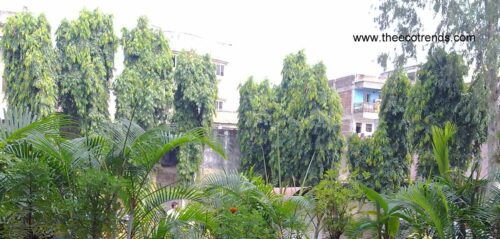Natural habitats support a variety of living organisms, some of which endemic to one particular habitat.
Habitats are important sources of medicines some of which cannot be manufactured without the presence of certain plants in that particular habitat.
Habitats like forest are lungs of the Earth as they provide oxygen and absorb carbon dioxide. Natural habitats provide food to not only the dwellers of a particular Habitat but they also provide food to humans in the form of vegetables, fruits, meat etc.
Various different types of habitats hold valuable knowledge for scientists regarding various Natural Processes, evolution of certain environments etc.
There are innumerable species of animals and plants which are yet to be discovered whose importance and evolution still needs to be understood.
Habitats also showcase the biodiversity of various organisms without which we would be devoid of Natural Beauty.
Medicine Industry would have not existed if there were no Forests as they are sources of medicinal Plants.
There are so many aspects of habitats that need to be understood and the knowledge associated with them needs to be applied for the mutual benefit of all organisms.
The word nesting means- act of making nests. Nests are made for birds at first place and also by some termites. As for a bird, nest is the small habitat in which it lays and incubates its eggs and raises its young.
Although the term popularly refers to a specific structure made by the bird itself—such as the grassy cup nest of the American robin or Eurasian blackbird, or the elaborately woven hanging nest of the Montezuma oropendola or the village weaver or the Indian Weaver Bird.
For some species, a nest is simply a shallow depression made in sand; for others, it is the knot-hole left by a broken branch, a burrow dug into the ground, a chamber drilled into a tree, an enormous rotting pile of vegetation and earth, a shelf made architecture of dried saliva or a mud dome with an entrance tunnel.
The smallest bird nests are those of some hummingbirds, tiny cups which can be a mere 2 cm (0.79 in) across and 2–3 cm (0.79–1.18 in) high. At the other extreme, some nest mounds built by the dusky scrub fowl measure more than 11 m (36 ft) in diameter and stand nearly 5 m (16 ft) tall.
Not all bird species build nests. Some species lay their eggs directly on the ground or rocky ledges, while brood parasites (like Indian Koel) lay their eggs in the nests of other birds, letting unwitting “foster parents” do all the work of rearing the young.
Although nests are primarily used for breeding, they may also be reused in the non-breeding season for roosting and some species build special dormitory nests or roost nests (or winter-nest) that are used only for roosting.
Most birds build a new nest each year, though some refurbish their old nests. The large eyries (or aeries) of some eagles are platform nests that have been used and refurbished for several years.
In most species, the female does most or all of the nest construction, though the male often helps for example pigeons.
In some Polygynous species, however, the male does most or all of the nest building like Indian Weaver Bird. In this case, the nest may also form a part of the courtship display. The ability to choose and maintain good nest sites and build high quality nests may be selected for by females in these species.




